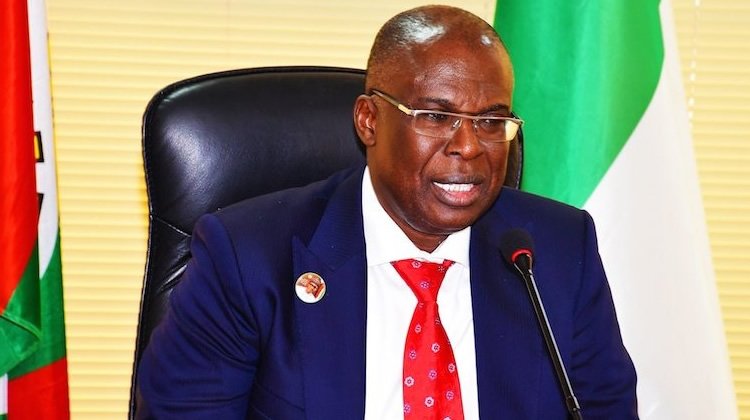
Manufacturing firms in Nigeria are currently bedevilled by a diesel price hike that has significantly spiked production costs amid inflationary pressure on the economy. EDIDIONG IKPOTO interrogates how the energy crisis could raise inflation for Nigeria’s consuming public
Over the past six months, manufacturing companies have faced challenges with regard to their energy needs. An increasingly inconsistent supply of power, coupled with a significant spike in the price of diesel, has produced far-reaching consequences in relation to production costs.
For most industry players and analysts, this challenge has pushed several industries to the brink, more so because it has been worsened by the Russia-Ukraine war which has triggered a global energy crisis that reverberated like a ripple across a pond.
Manufacturers have often raised the alarm over lack of access to forex, excessive taxation, high electricity tariff, and harsh operating environment, among others.
But energy costs and foreign exchange crises take precedence over the majority of challenges facing manufacturers in Nigeria today.
On Friday, July 8, 2022, the Manufacturers Association of Nigeria, warned that a shutdown of manufacturing activities was imminent if nothing was done to address the soaring cost of energy bedevilling the sector.
In a statement, the Director-General of the association, Segun Ajayi-Kadiri, said over the years, the manufacturing sector had been battered by numerous challenges which had reduced the number of industries in Nigeria and converted industrial hubs in many parts of the country into warehouses of imported goods and event centres.
The statement also noted that manufacturers were heavy users of electricity in Nigeria, which naturally necessitated their keen interest in electricity and alternative energies supply-related discourse and development.
The MAN also asked for a policy that would urgently allow companies and airlines to import diesel and aviation fuel respectively from the Republic of Niger and Chad.
It further said that by immediately opening up border posts in that axis for this purpose, the effect of high diesel and aviation fuel prices would be cushioned on the economy.
According to the association, there is an urgent need to save the remaining manufacturing companies from closing down as a result of challenges arising from the inadequate electricity supply, inaccessible foreign exchange, and a rise in the cost of diesel.
Globally, prices started to rise in mid-2020 when businesses shut down due to the COVID-19 pandemic, straining supply chains. While it was projected that the price system would resolve itself in the succeeding years, an unpredictable element – the Russia-Ukraine war – came into the mix and exacerbated an already snarled supply chain.
Again, in Nigeria, as in many parts of the world including the United States, inflationary pressure started building since the beginning of the year, and the country’s working public has had to grapple with the harsh reality of seeing their wages pay for fewer goods and services.
According to the Nigerian Living Standards Survey report published by the NBS in 2020, the number of poor Nigerians stood at an estimated figure of 82.9 million. What this implied was that about 40.1 per cent of Nigerians were living below the breadline.
Also, according to the National Bureau of Statistics, on average, four out of 10 individuals in Nigeria have real per capita expenditures below N137,430 per year, which translates to N376.5 per day.
Furthermore, in March 2022, the World Bank said that the number of poor Nigerians was projected to hit 95.1m in 2022.
In its poverty assessment report titled, “A Better Future for All Nigerians: 2022 Nigeria Poverty Assessment,” the Washington-based bank said that the COVID-19 crisis was driving up Nigeria’s poverty rate, pushing more than five million additional people into poverty by 2022.
In the light of real per capita GDP growth showing negative trends in all sectors in 2020, the bank said the country’s poor masses now had to grapple with a deepened level of poverty, while those households that were just above the poverty line prior to the COVID-19 crisis would be likely to fall into poverty.
“Were the crisis not to have hit (the counterfactual scenario), the poverty headcount rate would be forecast to remain virtually unchanged, with the number of poor people set to rise from 82.9 million in 2018/19 to 85.2 million in 2020 and 90.0 million in 2022, due largely to natural population growth,” the bank said.
“Given the effects of the crisis, however, the poverty headcount rate is instead projected to jump from 40.1 per cent in 2018/19 to 42.0 per cent in 2020 and 42.6 per cent in 2022, implying that the number of poor people was 89.0 million in 2020 and would be 95.1 million in 2022. Taking the difference between these two scenarios, the crisis alone is projected to have driven an additional 3.8 million Nigerians into poverty in 2020, with an additional 5.1 million living in poverty by 2022.”
Meanwhile, Nigeria’s unemployment rate as of the end of 2020 rose to 33.3 per cent from 27.1 per cent recorded as of Q2 2020, indicating that about 23,187,389 (23.2 million) Nigerians were unemployed.
What this means is that the nearly 100 million Nigerians who already live in poverty are now staring down the barrel of steeper economic consequences, in light of the present reality.
This present reality is the increasing cost of energy, which is one out of many factors that have substantially driven up the production cost of all manufacturing outfits.
The problem is likely not going to disappear anytime soon, implying that the rising cost of products in the market could only be a precursor to what might be the worst price surge the economy has seen in a long time.
According to experts, there is an urgent need to devise an action plan that would help cauterise this problem, as the reality of the situation is that manufacturers would either have to increase prices or shut down operations, and either option would be fraught with devastating effects on the economy.
Recently, at the Lagos Chamber of Commerce and Industry’s economic outlook press conference, the President of the chamber, Asiwaju Dr Michael Olawale-Cole, warned the Federal Government to find an urgent solution to the energy crisis plaguing organised businesses before the situation would be completely blown out of proportion.
Olawale-Cole said, “With the cost of diesel at record levels and persisting poor power supply, businesses are running on unsustainable costs and producing at uncompetitive prices. This can lead to job losses if the output is constrained due to the unbearable cost of production. If not quickly tackled, these challenges will likely subdue the GDP growth potentials and projections for 2022.
“We recommend that government invest more in technology to fight pipeline and power installation vandalism. The government should create funding for critical infrastructure and special purpose intervention in the power sector. The newly launched Infrastructure Corporation of Nigeria (Infracorp) has a mandate to focus on power, renewables, transport, and logistics. The INFRACORP will succeed in mobilizing private sector participation if we can achieve cost-reflective pricing in the power sector. The most sustainable solution to Nigeria’s power shortages is the transition to renewable energy.”
In the same vein, the Chief Executive Officer, Coleman Technical Industries, George Onafowokan, in an exclusive chat with our correspondent, said that higher energy costs would invariably trigger higher prices.
Onafowokan said that while little success had been recorded in the area of modular refineries, much more work needed to be done in setting up more structures to ensure a stable supply of diesel.
He said, “Diesel prices are affecting everybody. At N800 per litre, it’s a terrible state. The fact is, there will be higher prices definitely for now, because inflation will also go up and certain production costs are going up. So, if diesel is going up, it will add to the overhead cost of business since the majority of manufacturers in Nigeria practically and in real terms use diesel to run their factories. Once your diesel cost has gone up from N300 to N800 per litre, and in some parts of the country, N900, it changes the dynamics.”
Asked why the presence of modular refineries in Nigeria had not helped address the hike in the price of diesel, Onafowokan said, “We do not have enough (modular refineries). I think there is Waltersmith. Modular refineries cannot satisfy your total requirements. You need quite a lot of them. It’s like saying you have smaller units of a big jigsaw puzzle. You need numbers. They need to be encouraged. At least, it is good that we have some, but they are not enough. The demand is still above supply. We are in a country where the majority of businesses, the majority of homes, and the majority of the commercial spectrum are using diesel. So, you cannot, unfortunately, solve it with just one unit. You need quite a lot of them.”
The Coleman Wires and Cables boss also urged the Federal Government to deregulate the power sector in a manner that would promote competition among the power distribution companies. This, he said, would galvanise the Discos to raise their performance levels out of the fear of losing customers, as is obtainable in the telecommunications sector.
Manufacturers spent N425bn on alternative energy sources such as gas, low-pour fuel oil, diesel and petrol between 2017 and 2021, according to The PUNCH’s computation of energy expenditure of members of MAN.
According to the data, expenditure on alternative energy sources by MAN members amounted to N117.38bn in 2017; N93.11bn in 2018; N61.38bn in 2019; N81.91bn in 2020, and N71.22bn in 2021.
Manufacturers self-generate about 13,223 megawatts of electricity, according to data by MAN.
With the soaring energy costs, their expenditure on power is set to soar. Analysts have advised manufacturers to begin to explore renewable energy. On the other hand, they have urged the government to initiate an energy policy that will aid manufacturing and other real sector segments of the economy. The policy, according to analysts, would involve cost-reflective tariff systems that would ensure steady energy supplies to industrial clusters and reasonable profits for investors.





